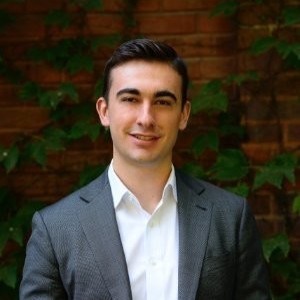Earlier in the year, SATOV spoke with alumnus Ky Swift, now Director of Sports & Media Strategy at Rogers Sports & Media. [Edited]
Can you describe your role at Rogers Sports & Media and what trends you’re seeing in industry?
I head up the strategy team, and we work across all business units and brands. Some of these include Sportsnet, City and TSC Today’s Shopping Choice. We support the strategy development process, and we also get opportunities to roll up our sleeves to help implement some of the strategic initiatives as well. That is a whole lot of fun to do, working with different teams. And we also help accelerate different growth initiatives with M&A and work with Rogers Corporate.
We have a world-class team, ambitious plans and lots of opportunity. Over the next 18 months, a lot of exciting things will be happening around sports and media. And we’re looking for a lot of people to help accelerate that growth trajectory with us.
The media landscape is constantly evolving. Some of the trends I’ll talk about won’t necessarily be new to anyone, but I think it’s the speed and velocity of those trends that are pretty wild. And if anything, Covid has been a kind of great accelerator for a lot of these things that we were already seeing in the decade leading up to 2020.
(1) Changing consumers. Seismic shifts in consumption habits.
(2) Competitive set. There are no geographical boundaries. The players are global behemoths and various large tech players with diversified monetization models.
(3) Content costs. No matter where you look, whether it is entertainment content or sports content, those costs are rapidly increasing.
How did you go from SATOV to Rogers?
I am a big sports fan. I think the space is incredibly dynamic and interesting, and ripe with challenges and opportunities. I had a little bit of exposure at SATOV over the years, both in some sports categories and some media categories. That sparked my interest more from the business side. But like anything with consulting, you see a million different things, a lot of weird fun facts. And I can now rhyme off a lot that no one is particularly interested in, but I can say them anyway. So it seemed like a natural progression.
Are there any learnings you took away from SATOV that help you in your new role?
Consulting has lots of different frameworks, but most stem from scientific method and logical reasoning. At SATOV you get really good at that – communicating both verbally and in written form, through a lot of slides, a lot of painful detail in writing slides.
And then you kind of start to bridge more into it: influencing without authority. That’s a big one. Managing large projects, complex ones, different stakeholders along the way. You get all of that with a consulting toolkit.
More importantly, at SATOV, what really hit home was the importance of a more pragmatic approach to problem solving, married with an understanding of how difficult it is to run businesses – there are a lot of different sizes and scales, and each has different challenges. We lived by the saying, “Done is better than perfect and execution eats strategy for breakfast.” And those two things are extremely true. This kind of learning – it’s just invaluable.
What advice would you give aspiring Analysts?
Well, this is dangerous territory! I would say it’s all about attitude. I mean, if you’re stepping in the door, you’re bright. You definitely have the horsepower to do it. But so critical is the attitude to get things done, to put in a helping hand and embrace learning. I think it all comes down to attitude, and just enjoying it. There are going to be a lot of challenges along the way. Some are going to be very hard. But you just have to maintain that positive attitude. That’s huge in the early years.

